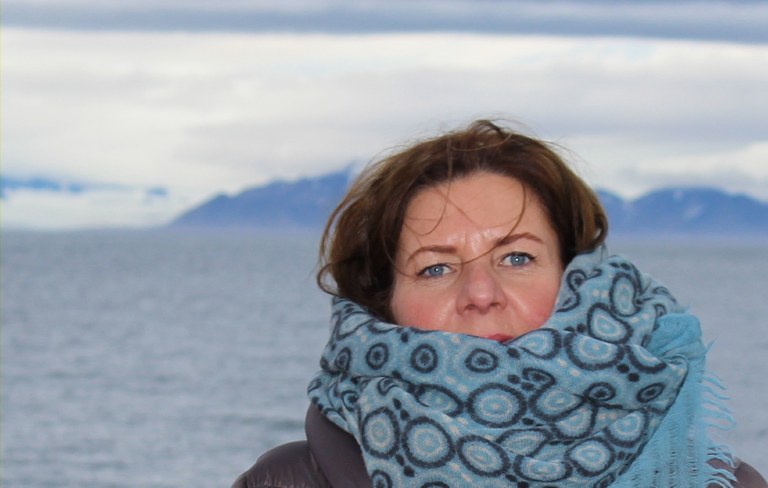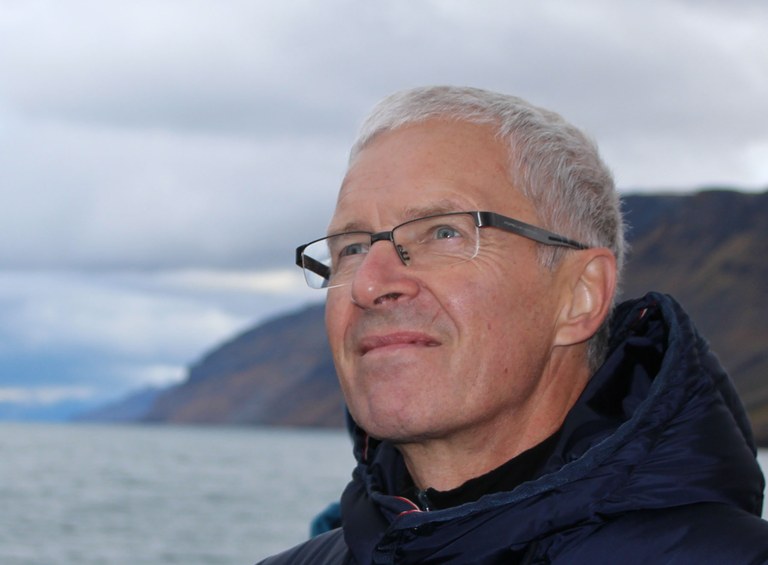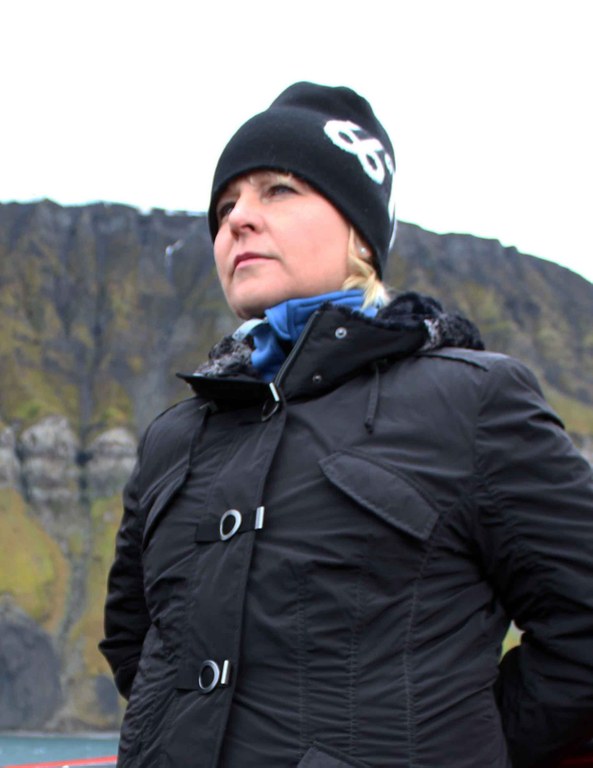Challenges to welfare state at top of ministers’ in tray
Youth unemployment has high political priority in the Nordic region. At the latest Nordic Council of Ministers meeting, labour ministers agreed to encourage employers to take on some of the responsibility for young people who don’t work and who are not in education.
The Nordic countries also agreed to cooperate on ways to handle the consequences of labour immigration - both in terms of scope and the risks of social dumping. These were key issues during the ministers‘ meeting, where Svalbard’s Arctic surroundings and cultural heritage also played an important role.
Sitting around an open fire in the traditional earth hut next to Barentz Hus, eating reindeer casserole and listening to young explorers talk about the life of the polar bear while darkness descended over the wilderness outside, Nordic men and women were being brought closer together. Exotic cultural heritage from earlier coal mining activities and settlements left an impression as the Governor - the Norwegian government’s highest representative in Svalbard - invited the guests to a boat trip in Isfjorden (the Ice Fjord). The powerful Arctic nature provided a dramatic backdrop; the mountains had clearly visible geological layers and their rolling peaks were covered by September’s first snow.

“I think this meeting shows that when we take our time, when we are concrete and more open, we have quite a lot to learn from each other. I think the combination of this shared experience of Svalbard with all its nature and history, the generous schedule for debates and the fact that the countries have been represented on a high level, has been important,” Bo Smith, Permanent Secretary at Denmark’s Ministry of Employment, told Nordic Labour Journal. He put into words what many experienced, and this was appreciated by Hanne Bjurstrøm who heads the Nordic cooperation on working life issues.
“Our debates were very good and people were very open about the challenges which face them. It strikes me how much we have in common.”
Youth outside
Youth unemployment is a top political priority and fuelled detailed debates during the ministerial meeting.

“Our Nordic welfare systems are very well equipped, but nevertheless we have young people on the outside, either because they’ve fallen out of the school system or because they have major problems,” said Hanne Bjurstrøm.
Norway is a case apart because of its low unemployment, and all measures are now targeting people under 30. Hanne Bjurstrøm has focused particularly on young people with reduced working ability.
“Among young people with disabilities we know there are many who were born with problems and many have serious psychological problems. All of the countries face challenges not least when it comes to having realistic expectations of getting exposed groups into working life. I felt we had a god debate and an important discussion on this topic. I got further confirmation for just how challenging these issues are,” Norway’s Minister of Labour Hanne Bjurstrøm told Nordic Labour Journal.
As chair she actively pushed for a joint plan for how to encourage employers to take some of the responsibility for getting young people with no work or ongoing education back into the labour market.
“We agreed to talk to public and private employers to help them understand the extent of their responsibility when it comes to getting more people into jobs. I was keen to include into this also people how are not highly skilled.”

Bo Smith, Permanent Secretary at Denmark’s Ministry of Employment, underlined the importance of the thorough debate on youth unemployment:
“It was extremely useful to go through all of the initiatives the different countries have launched to make sure young people without an education do get an education, and that those who have an education but struggle to find a job do get a job, so that we don’t loose a generation of young people in times of low growth. The debate gave us an overview over the existing initiatives and the good experiences the different countries have had. With this I really feel we got something to take home with us.”
Increasing labour immigration
Line Eldring, researcher at Norway’s Institute for Labour and Social Research (FAFO), opened the debate on ‘Challenges and opportunities as a result of European labour mobility”, pointing out that the 2004 and 2007 EU enlargement with new member states from Central and Eastern Europe has triggered the largest movement of labour which Europe has seen in modern times.
Nordic countries have also proven attractive for job seekers and workers from the new member states. On top of that there is a considerable number of workers employed by foreign companies, self employed people and non-registered workers. Eight years after the EU enlargement, researchers can conclude that neither the most pessimistic nor the most optimistic predictions have come true. But Nordic working life structures have come under considerable pressure.
The debate on the consequences of labour immigration and the risks of social dumping also drew comments from the Danish delegation:
“Some people might come to exploit our generous welfare systems or there might be salary dumping. On these issues we agreed that, based on our many years of experience, including in the wake of the Laval ruling, it is now time to get an overview of the risks of social dumping. We also agreed that the Posting of Workers Enforcement Directive is one issue we all give high priority to, and it would be good if all the Scandinavian countries could work together on the implementation of this,” said Bo Smith, who also wanted to underline the challenges faced by all the countries of integrating foreigners with language problems into the labour market.
“Here too I believe we can benefit from comparing what we do individually to integrate for instance immigrant women. It’s a group we all have problems including into our labour markets, and who particularly struggle with the language.”

Both ministers and the social partners were concerned about the risk of low-paid labour immigrants with bad working conditions squeezing young people and others with low education or reduced working ability out of the labour market.
Minister of Labour Hanne Bjurstrøm highlighted the Swedish system of registering service providers as an idea for others who want to improve their overview over labour immigration and workers’ wages and working conditions, allowing the social partners a more active role in preventing social dumping.
Deputy director at the Confederation of Norwegian Business and Industry (NHO) Baard Meidell Johannesen represented the employers at the meeting. He said social dumbing contributes to push weak groups out of the labour market.
So what do you, Minister of Labour Hanne Bjurstrøm, think about that?
“That was also something I wanted to focus on. In my opinion we need to work to integrate people who are on the outside, be it people with reduced working ability or disabilities or immigrants with few formal skills. Of course, when we receive very strong groups of workers who are willing to work long hours for little money, it is hard to integrate the weaker groups into the labour market.”
Loa Brynjulfsdottir, General Secretary at the Council of Nordic Trade Unions (NFS) encouraged the ministers to improve cooperation on concrete issues. What is your view on that?
“We have an agreed process within the existing Nordic cooperation to remove border obstacles between the countries. When it comes to social dumping we have agreed to work together in the face of an EU directive which could represent a challenge to our model. I am happy about this. I also recognise there are many differences between our countries, both politically and in the ways we have organised our welfare societies. Yet there are some over-arching structures we must look after, the very reasons why we are doing so well compared with much of the rest of Europe. That’s why I am happy that we have decided to work together on this,” said Hanne Bjurstrøm.
Gender segregated labour market
Sweden’s Minster of Labour Hillevi Engström also got engaged in the discussions with her Nordic colleagues.

“I think these meetings provide a lot of inspiration and ideas. In the EU 27 many countries appear strangers to us because their labour market models are different, while here in the Nordic region we share so much and can learn a lot from each other.”
She introduced the debate on gender equality in working life.
“This has been a worry in Sweden for some time - partly the gender segregation of the labour market and partly the fact that women earn less than men and that women to a greater extent work only part time.”
The Swedish government has just established a committee for gender equality in working life where employers, trade unions, researchers and others will look at the different conditions and opportunities faced by women and men in working life, while trying to find out the reasons behind these differences. The committee’s findings should encourage debate and highlight what needs doing to achieve better gender equality in working life.
Was this an inspiration for Norway?
“It was my idea that we should discuss women and working hours,” says Hanne Bjurstrøm.
“Sweden had a broader approach to gender equality in working life. I am very happy to take part in that approach. Our challenge in Norway is that we have many women in working life but many of them work part time. Some work part time involuntarily, but nine in ten do it voluntarily. So I agree with Hillevi Engström when she says what constitutes ‘voluntary’ is up for discussion, because many might feel the nature of their job makes it impossible to work full time. I have huge respect for that. What Sweden is doing now seems to be very exciting. They are launching a kind of commission which will look at working life in a gender equality perspective, looking at wages, sick leave, part time work, career opportunities. We will be following this work and see whether we can use some of their findings.
“I have been focusing on the fact that women work a lot of part time, because working life is so gender segregated and because it is mainly women who work within the health sector. When the level of part time working women approaches 50 percent, we get a labour shortage and that is a challenge,” said Hanne Bjurstrøm. She also agreed with the NHO’s assessment during the meeting that many want more spare time to enjoy their good quality of life.
“It is a choice people make. But I must, as the Minister of Labour, underline that when people do this it does have consequences on a collective level which we must relate to.”
- Conclusions from the meeting of labour ministers
-
Challenges to the welfare state
The follow-up to discussions on the challenges to labour market and welfare policies as a consequence of immigration will focus on four themes:
- To increase employment among immigrants with a focus on language as the key to integration.
- To strengthen Nordic cooperation on the implementation of the Posting of Workers Enforcement Directive.
- To analyse the extent of posted workers in the Nordic region.
- To cooperate on the consequences of a possible growth in immigration from Southern Europe.
Youth unemployment
In the follow-up to discussions on youth unemployment the Nordic Council of Ministers’ Committee of Senior Officials was encouraged to cooperate with Nordic employers’ organisations in order to map ‘best practice’ when it comes to how companies contribute to getting young people without further education or work into the labour market. The mapping aims to showcase good examples both of initiatives from businesses and those coming as a result of public incentives. The aim is to increase awareness of the importance of businesses when it comes to reducing youth unemployment and to create inspiration for other businesses.
 Follow us on Facebook
Follow us on Facebook
